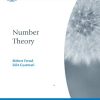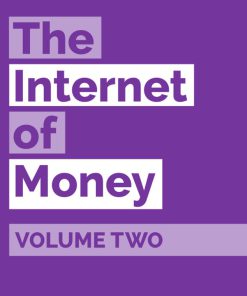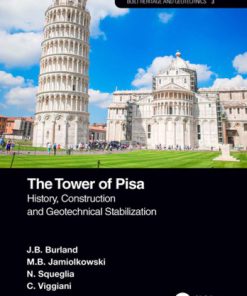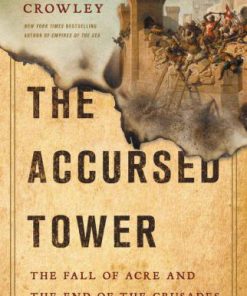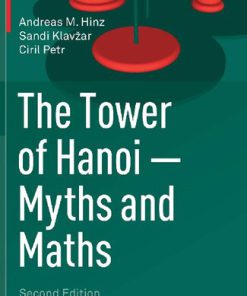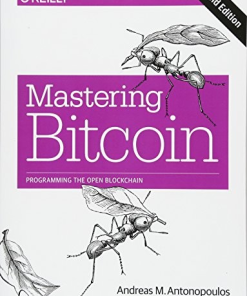The Tower of Hanoi Myths and Maths 2nd Edition by Andreas Hinz, Sandi Klavzar, Ciril Petr ISBN 3319737791 9783319737799
$50.00 Original price was: $50.00.$25.00Current price is: $25.00.
The Tower of Hanoi Myths and Maths 2nd Edition by Andreas M. Hinz, Sandi Klavzar, Ciril Petr – Ebook PDF Instant Download/Delivery: 3319737791, 978-3319737799
Full dowload The Tower of Hanoi Myths and Maths 2nd Edition after payment
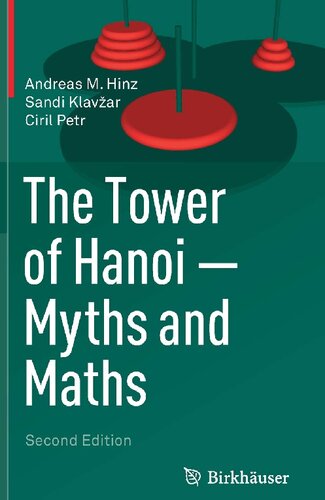
Product details:
ISBN 10: 3319737791
ISBN 13: 978-3319737799
Author: Andreas M. Hinz, Sandi Klavzar, Ciril Petr
The solitaire game “The Tower of Hanoi” was invented in the 19th century by the French number theorist Édouard Lucas. The book presents its mathematical theory and offers a survey of the historical development from predecessors up to recent research. In addition to long-standing myths, it provides a detailed overview of the essential mathematical facts with complete proofs, and also includes unpublished material, e.g., on some captivating integer sequences. The main objects of research today are the so-called Hanoi graphs and the related Sierpiński graphs. Acknowledging the great popularity of the topic in computer science, algorithms, together with their correctness proofs, form an essential part of the book. In view of the most important practical applications, namely in physics, network theory and cognitive (neuro)psychology, the book also addresses other structures related to the Tower of Hanoi and its variants.
The updated second edition includes, for the first time in English, the breakthrough reached with the solution of the “The Reve’s Puzzle” in 2014. This is a special case of the famed Frame-Stewart conjecture which is still open after more than 75 years. Enriched with elaborate illustrations, connections to other puzzles and challenges for the reader in the form of (solved) exercises as well as problems for further exploration, this book is enjoyable reading for students, educators, game enthusiasts and researchers alike.
Excerpts from reviews of the first edition:
“The book is an unusual, but very welcome, form of mathematical writing: recreational mathematics taken seriously and serious mathematics treated historically. I don’t hesitate to recommend this book to students, professional research mathematicians, teachers, and to readers of popular mathematics who enjoy more technical expository detail.”
Chris Sangwin, The Mathematical Intelligencer 37(4) (2015) 87f.
“The book demonstrates that the Tower of Hanoi has a very rich mathematical structure, and as soon as we tweak the parameters we surprisingly quickly find ourselves in the realm of open problems.”
László Kozma, ACM SIGACT News 45(3) (2014) 34ff.
“Each time I open the book I discover a renewed interest in the Tower of Hanoi. I am sure that this will be the case for all readers.”
Jean-Paul Allouche, Newsletter of the European Mathematical Society 93 (2014) 56.
The Tower of Hanoi Myths and Maths 2nd Table of contents:
Chapter 0: The Beginning of the World
- 0.1 The Legend of the Tower of Brahma – A historical or mythological introduction to the Tower of Hanoi.
- 0.2 History of the Chinese Rings – Exploring the origins and mathematical structure of the Chinese Rings puzzle.
- 0.3 History of the Tower of Hanoi – A deep dive into the origins and development of the Tower of Hanoi puzzle.
- 0.4 Sequences – Focus on mathematical sequences:
- 0.4.1 Integers
- 0.4.2 Integer Sequences
- 0.4.3 The Dyadic Number System
- 0.4.4 Finite Binary Sequences
- 0.5 Indian Verses, Polish Curves, and Italian Pavements – Likely an exploration of the intersections between puzzles and cultural/mathematical concepts.
- 0.6 Elementary Graphs – Introduces basic graph theory concepts.
- 0.6.1 The Handshaking Lemma
- 0.6.2 Finite Paths and Cycles
- 0.6.3 Infinite Cycles and Paths
- 0.7 Puzzles and Graphs – Graph-theory applications to puzzles.
- 0.7.1 The Bridges of Königsberg
- 0.7.2 The Icosian Game
- 0.7.3 Planar Graphs
- 0.7.4 Crossing Rivers without Bridges
- 0.8 Quotient Sets – Focus on equivalence relations, group actions, and Burnside’s Lemma.
- 0.8.1 Equivalence
- 0.8.2 Group Actions and Burnside’s Lemma
- 0.9 Distance – Likely about distances in graphs or puzzles.
- 0.10 Early Mathematical Sources – Historical context for the development of these puzzles.
- 0.10.1 Chinese Rings
- 0.10.2 Tower of Hanoi
- Missing Minimality, False Assumptions, and Unproved Conjectures – A discussion on puzzle-solving and conjectures in the early stages of mathematical research.
- The Reve’s Puzzle – Possibly an introduction to a related puzzle or its mathematical significance.
- The First Serious Papers – Exploration of early formal treatments of these puzzles.
- Psychology, Variations, Open Problems – Discusses cognitive aspects and unsolved challenges in the puzzles.
- 0.11 Exercises – A collection of problems for the reader to engage with.
Chapter 1: The Chinese Rings
- 1.1 Theory of the Chinese Rings – An exploration of the mathematical structure and solving strategy of the Chinese Rings.
- 1.2 The Gros Sequence – Possibly a sequence related to the puzzle.
- The Greedy Square-Free Sequence – Likely discussing a specific type of sequence used in the puzzle.
- 1.3 Two Applications – Applications of the Chinese Rings puzzle in other contexts:
- Topological Variations
- Tower of Hanoi Networks
- 1.4 Exercises – Problems related to the Chinese Rings.
Chapter 2: The Classical Tower of Hanoi
- 2.1 Perfect to Perfect – Focusing on the concept of “perfect” states and solutions in the Tower of Hanoi.
- Regular States and Legal Moves
- The Optimal Solution – Likely introducing a formal way to solve the puzzle optimally.
- 2.1.1 Olive’s Algorithm – A specific algorithm for solving the Tower of Hanoi.
- 2.1.2 Other Algorithms – Additional solving algorithms.
- 2.2 Regular to Perfect – Another phase or step in solving the puzzle.
- Noland’s Problem
- Tower of Hanoi with Random Moves
- 2.3 Hanoi Graphs – Using graph theory to model the Tower of Hanoi.
- The Linear Tower of Hanoi
- Perfect Codes and Domination
- Symmetries
- Spanning Trees
- 2.4 Regular to Regular – A focus on specific solutions.
- The Average Distance on Hn3
- Pascal’s Triangle and Stern’s Diatomic Sequence
- Romik’s Solution to the P2 Decision Problem
- The Double P2 Problem
- 2.5 Exercises – Related exercises to solidify the concepts from the chapter.
Chapter 3: Lucas’s Second Problem
- 3.1 Irregular to Regular
- 3.2 Irregular to Perfect
- 3.3 Exercises
Chapter 4: Sierpiński Graphs
- 4.1 Sierpiński Graphs Sn3
- 4.2 Sierpiński Graphs Snp – A detailed look at these fractal-like graphs and their properties.
- Distance Properties
- Other Properties – Symmetry, Domination-type invariants, Planarity, Connectivity, Colorings, etc.
- Sierpiński Graphs as Interconnection Networks
- 4.3 Connections to Topology – Connections between these graphs and topological concepts.
- Sierpiński Spaces
- Sierpiński Triangle
- Cantor Sets
- Connections to Sierpiński and Hanoi Graphs
- 4.4 Exercises
Chapter 5: The Tower of Hanoi with More Pegs
- 5.1 The Reve’s Puzzle and the Frame-Stewart Conjecture
- 5.2 Frame-Stewart Numbers
- 5.3 Numerical Evidence for The Reve’s Puzzle
- 5.4 Even More Pegs
- Strong Frame-Stewart Conjecture (SFSC)
- 5.5 Bousch’s Solution of The Reve’s Puzzle – Focus on solving the puzzle with new techniques.
- Some Two-Dimensional Arrays
- Dudeney’s Array
- Frame-Stewart Numbers Revisited
- The Reve’s Puzzle Solved
- The Proof of Theorem 5.38
- 5.6 Hanoi Graphs Hnp
- 5.7 Numerical Results and Largest Disc Moves
- Path Algorithms
- Largest Disc Moves
- 5.8 Exercises
Chapter 6: Variations of the Puzzle
- 6.1 What is a Tower of Hanoi Variant?
- 6.2 Ambiguous Goal
- 6.3 The Tower of Antwerpen – A specific variation.
- Little Tower of Antwerpen
- Twin- and Triple-Tower Problems
- Linear Twin Hanoi
- Classical-Linear Hybrid Problem
- 6.4 The Bottleneck Tower of Hanoi
- 6.5 Exercises
Chapter 7: The Tower of London
- 7.1 Shallice’s Tower of London
- 7.2 More London Towers
- 7.3 Exercises
Chapter 8: Tower of Hanoi Variants with Restricted Disc Moves
- 8.1 Solvability
- 8.2 An Algorithm for Three Pegs
- The Cyclic Tower of Antwerpen
- 8.3 Undirected Move Graphs on More Than Three Pegs
- Stockmeyer’s Tower
- 3-Smooth Numbers
- Bousch’s Proof of Stockmeyer’s Conjecture
- Stewart-Type Algorithms
- The Linear Tower of Hanoi
- 8.4 The Cyclic Tower of Hanoi
- 8.5 Exponential and Sub-Exponential Variants
- 8.6 Exercises
Chapter 9: Hints, Solutions and Supplements to Exercises
- This chapter appears to provide hints and solutions to exercises from the previous chapters.
Chapter 10: The End of the World
- Likely a conclusion or reflection on the Tower of Hanoi and its broader mathematical and puzzle-related context.
People also search for The Tower of Hanoi Myths and Maths 2nd:
the tower of hanoi myths and maths pdf
importance of tower of hanoi
explain the tower of hanoi
tower of hanoi math is fun
history of the tower of hanoi
You may also like…
Chemistry
Maths for Chemists 2nd Edition by Martin Cockett, Graham Doggett ISBN 9781782624950 1782624953
Business & Economics - Personal Finance
Uncategorized
Technique - Construction
History - World History
Romance - Other Romance Categories
After The Party Party at the Tower 5 1st Edition M K Moore 9798587281486
Business & Economics
Business & Economics - Mathematical Economics



